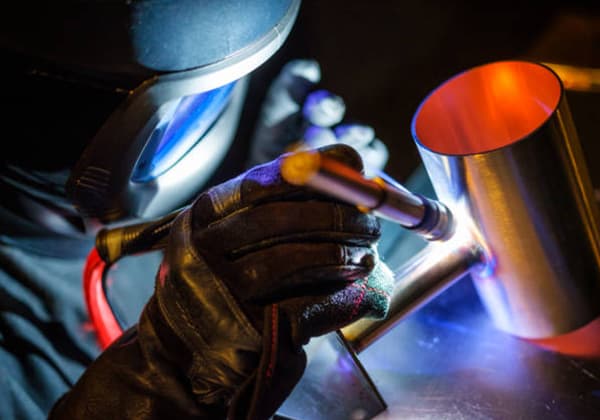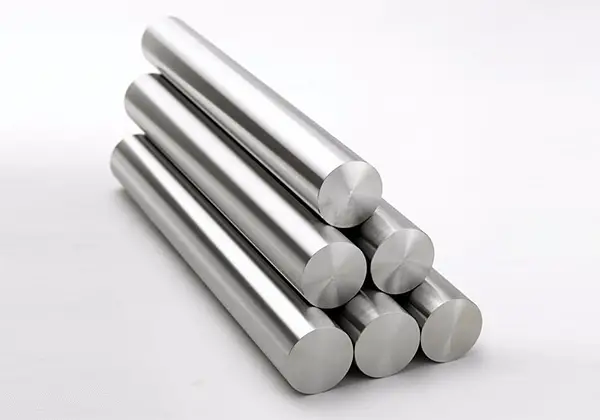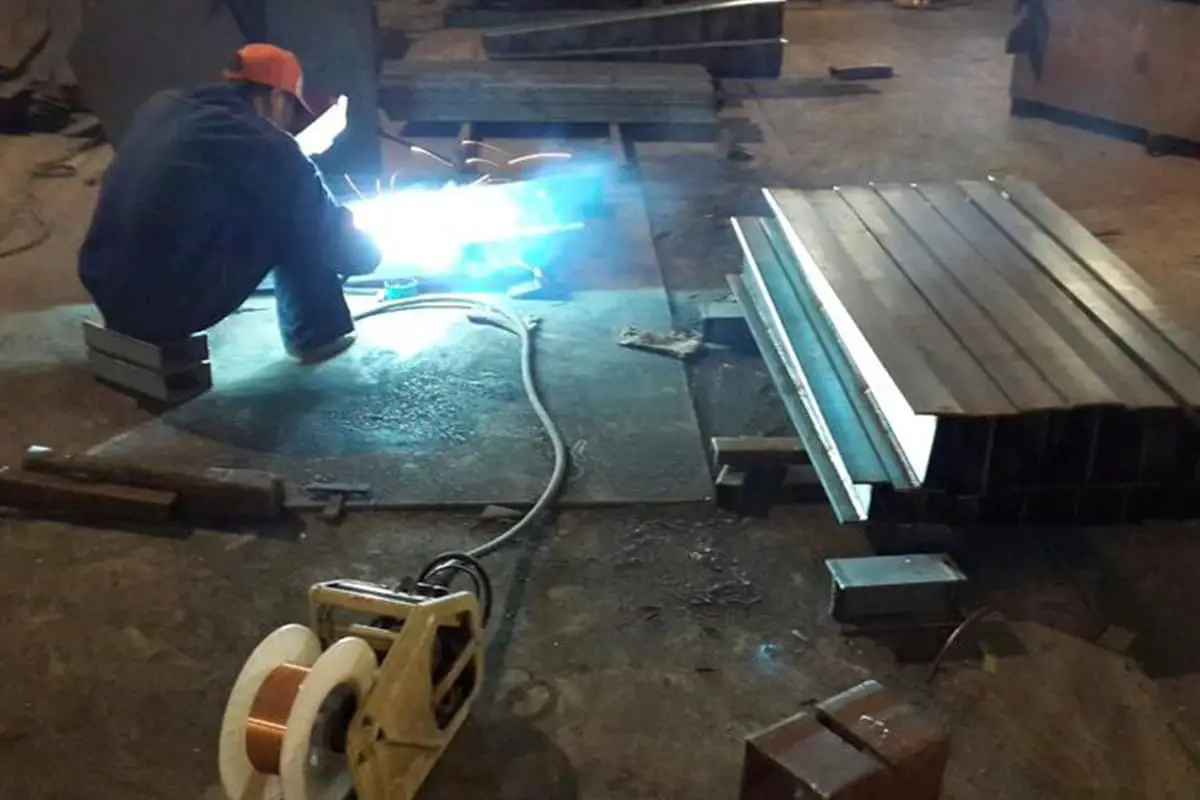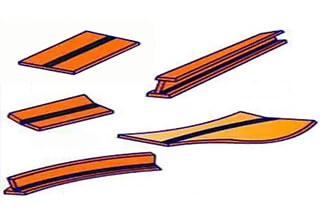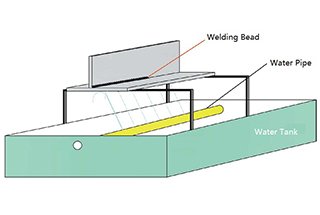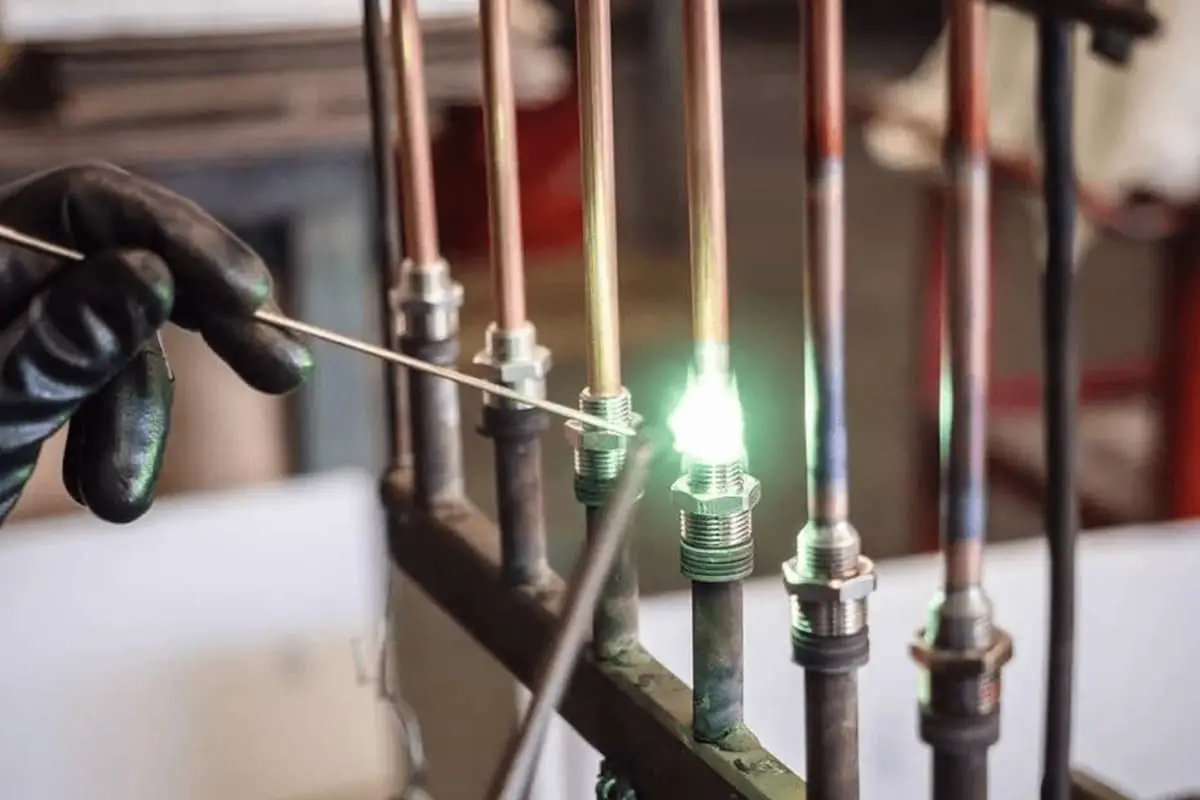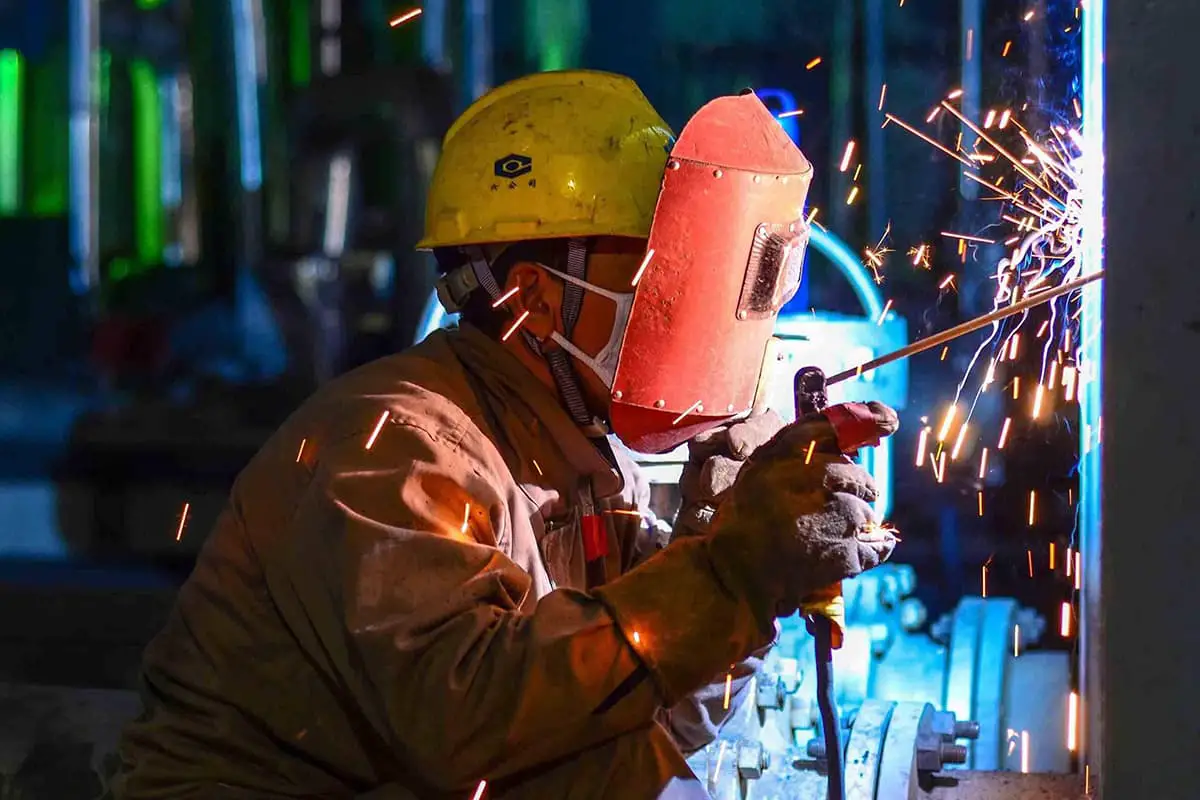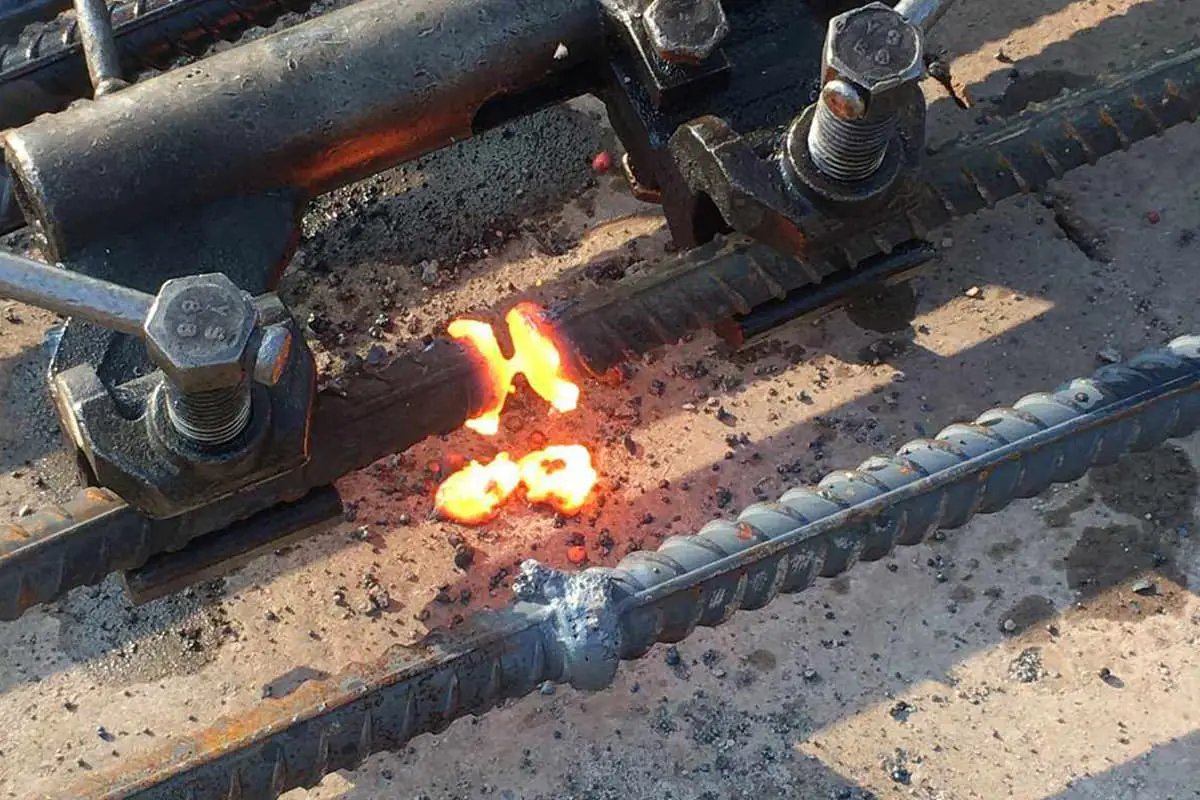
Why is post-weld treatment crucial for aluminum alloys? This process is vital for removing residues, enhancing surface quality, and improving the structural integrity of welded joints. By understanding the steps of residue removal, surface treatment, and heat treatment, you’ll learn how to maintain the durability and appearance of aluminum welds. This article delves into each method, offering insights into achieving optimal results and preventing common issues like corrosion and stress. Dive in to master the essential techniques for post-weld aluminum treatment.
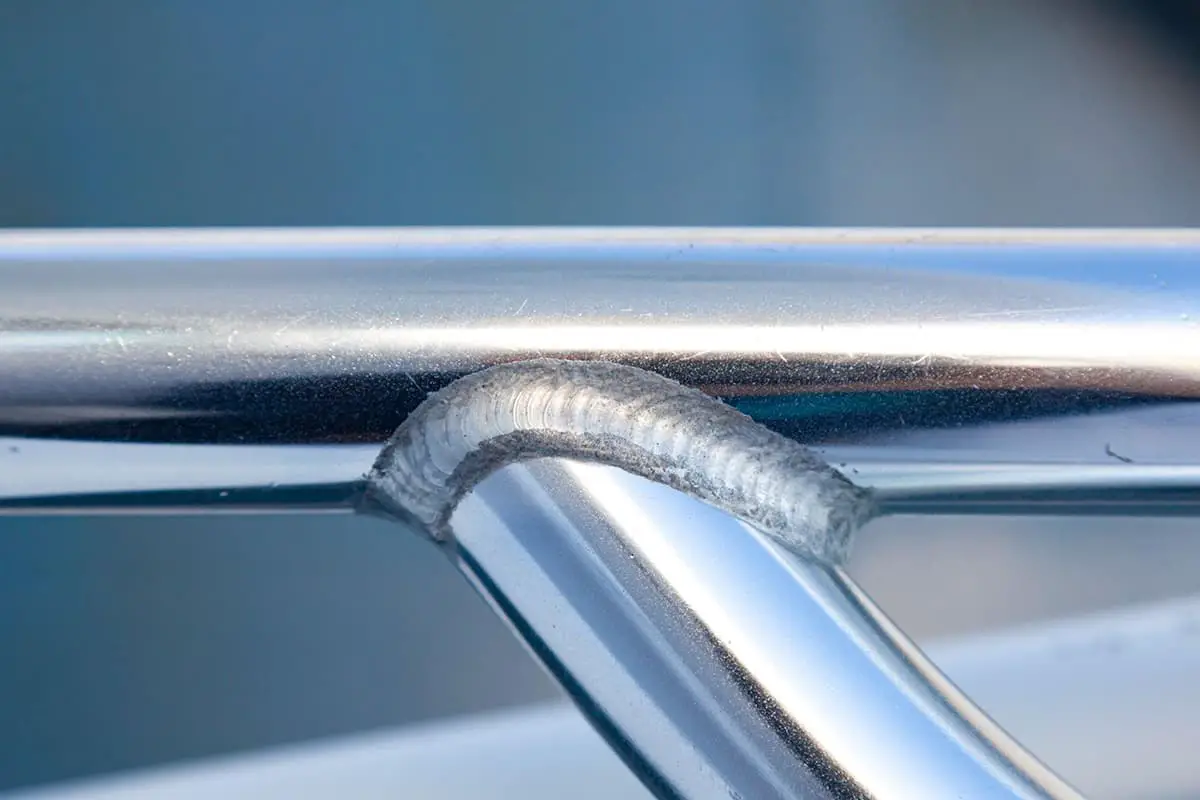
After welding the workpiece, if gas welding or flux-cored welding rods are employed, it’s necessary to promptly clear the residual flux and slag from the weld and its surrounding area before conducting visual inspection and non-destructive testing.

This step prevents the corrosion of the weld and its surface by slag and residual flux, thereby avoiding undesirable consequences. The common methods for post-weld cleanup are as follows:
(1) Scrubbing in hot water between 60℃ and 80℃;
(2) Immersion in potassium dichromate (K2Cr2O2) or 2% to 3% chromic anhydride (Cr2O2);
(3) Further rinsing in hot water between 60℃ and 80℃;
(4) Drying in a drying oven or by air-drying.
To test the effectiveness of residual flux removal, distilled water can be dropped onto the weld of the workpiece. The distilled water is then collected and dropped into a test tube containing a 5% nitric acid solution. If white precipitate appears, it indicates that the residual flux has not been fully removed.
Through the proper welding process and correct operation techniques, the surface of aluminum and aluminum alloy welds after welding presents a uniform, ripple-free, and smooth appearance.
Anodizing, particularly when combined with polishing and dyeing techniques, results in high-quality decorative surfaces. The heat-affected zone from welding can be minimized, reducing the color changes induced by anodizing to a minimum. Rapid welding processes can significantly reduce the heat-affected zone. Hence, the quality of anodizing treatment on flash welded seams is good.
Especially for welding pieces of alloys that cannot be heat-treated for strengthening in the annealed state, the color contrast between the metal base and the heat-affected zone is minimal after anodizing. Furnace and dip brazing, which do not involve localized heating, yield a very uniform metallic color appearance.
Alloys that can be heat-treated for strengthening, often used for structural parts of buildings, are frequently anodized after welding. In these alloys, welding heat forms precipitates of alloy elements.
After anodizing, differences will appear between the heat-affected zone and the weld seam. These halo zones near the welding area can be minimized by rapid welding or by using cooling blocks and clamping plates. These halo zones, before anodizing and after welding, can be eliminated through precipitation hardening treatment.
In the chemical treatment of welded parts, there can be significant color differences between the weld metal and the base metal. This necessitates careful selection of the filler metal composition, especially when it contains silicon, which can affect color matching.
If necessary, the weld can be mechanically polished. Common mechanical polishing methods include polishing, grinding, abrasive blasting, and shot blasting. Mechanical polishing improves the surface of aluminum parts through physical methods such as grinding, deburring, burnishing, polishing, or sandblasting. The goal is to achieve the desired surface quality with as few steps as possible.
However, aluminum and its alloys are soft metals with high friction coefficients. Overheating during the grinding process can potentially cause the welded parts to deform, or even lead to grain boundary fractures in the base metal. Therefore, sufficient lubrication is required during the polishing process, and the pressure on the metal surface should be minimized.
The purpose of post-weld heat treatment is to improve the structure and performance of the welded joint or to eliminate residual stress. Heat-treatable aluminum alloys can undergo post-weld heat treatment, restoring the strength of the base metal heat-affected zone close to its original strength.
Generally, the point of failure in the joint typically occurs within the fusion zone of the weld. After post-weld heat treatment, the strength gained by the weld metal primarily depends on the dispersed filler metal.
1. Characteristics of Aluminum and Aluminum Alloy Welding
(1) Aluminum easily oxidizes in air and during welding, forming aluminum oxide (Al2O3) which has a high melting point and is extremely stable, making it difficult to remove. This impedes the melting and fusion of the parent material. The heavy specific gravity of the oxide film prevents it from floating to the surface, resulting in defects such as slag inclusions, lack of fusion, and incomplete penetration.
The surface oxide film of aluminum and its absorbed moisture can lead to porosity in the weld seam. Before welding, strict surface cleaning should be performed using chemical or mechanical methods to remove the oxide film. Protection should be enhanced during welding to prevent oxidation.
During tungsten inert gas (TIG) welding, an alternating current power source should be used to remove the oxide film through “cathodic cleaning”. When gas welding, a flux that removes the oxide film should be used. During thick plate welding, the welding heat can be increased. For example, helium arc has high heat, so use helium or argon-helium mixed gas protection, or large-diameter gas metal arc welding (GMAW) with positive direct current, which eliminates the need for “cathodic cleaning.
(2) The thermal conductivity and specific heat of aluminum and its alloys are more than twice that of carbon steel and low alloy steel. The thermal conductivity of aluminum is dozens of times that of austenitic stainless steel.
During the welding process, a large amount of heat can be rapidly transferred to the base metal, so when welding aluminum and its alloys, in addition to the energy consumed in melting the metal pool, more heat is wasted in other parts of the metal. This energy waste is more significant than in steel welding. To achieve high-quality welded joints, energy sources that are concentrated and high power should be used as much as possible. Preheating and other process measures can also be used.
(3) The linear expansion coefficient of aluminum and its alloys is approximately twice that of carbon steel and low-alloy steel. Aluminum exhibits significant volumetric shrinkage during solidification, causing substantial deformation and stress in the weldment. Thus, measures to prevent welding deformation must be employed. The solidification of an aluminum welding pool tends to result in shrinkage cavities, porosity, hot cracking, and high internal stress.
To prevent the occurrence of hot cracks, production can adjust the composition of the welding wire and the welding process. In corrosion-resistant situations, aluminum-silicon alloy welding wire can be used to weld aluminum alloys, excluding aluminum-magnesium alloys.
In aluminum-silicon alloys, the hot cracking tendency is considerable when silicon content is 0.5%. As the silicon content increases, the alloy’s crystallization temperature range decreases, its fluidity significantly improves, and its shrinkage rate decreases, consequently reducing the hot cracking tendency.
According to production experience, when the silicon content is 5%-6%, hot cracking does not occur, hence using SAlSi wire (with 4.5%-6% silicon content) provides better crack resistance.
(4) Aluminum has strong reflectivity for light and heat. During the transition from solid to liquid states, there is no noticeable color change, making it challenging to judge during the welding process. High-temperature aluminum has very low strength, making it difficult to support the weld pool and prone to burn-through.
(5) Aluminum and its alloys can dissolve a significant amount of hydrogen in a liquid state but hardly any in a solid state. During the solidification and rapid cooling of the welding pool, hydrogen doesn’t have time to escape, leading to the formation of hydrogen porosity.
The moisture in the arc atmosphere, welding materials, and the adsorbed moisture on the oxide film of the parent material surface are significant sources of hydrogen in the weld seam. Therefore, strict control over the sources of hydrogen is necessary to prevent the formation of porosity.
(6) Alloy elements tend to evaporate and burn off, reducing the performance of the weld seam.
(7) If the base metal of the parent material is strain-hardened or solution heat-treated, welding heat can reduce the strength of the heat-affected zone.
(8) Aluminum, having a face-centered cubic lattice and no allotropic forms, does not undergo phase transition during heating and cooling. This leads to coarse grains in the weld seam, which cannot be refined through phase transitions.
Almost all welding methods can be used for welding aluminum and its alloys. However, the adaptability of aluminum and its alloys to different welding methods varies, and each method has its own applications.
Gas welding and shielded metal arc welding are simple and convenient. Gas welding can be used for seam repairs on aluminum sheets and castings where the quality requirements are not high. Shielded metal arc welding can be used for repair of aluminum alloy castings.
Inert gas shielded welding (TIG or MIG) is the most widely used method for welding aluminum and its alloys. Aluminum and aluminum alloy sheets can be welded using alternating current tungsten inert gas welding or pulsed tungsten inert gas welding.
Aluminum and aluminum alloy plates can be welded using helium tungsten arc welding, argon-helium mixed tungsten inert gas welding, metal inert gas welding, and pulsed metal inert gas welding. The application of metal inert gas welding and pulsed metal inert gas welding is becoming increasingly widespread (argon or argon/helium mix).
3. Welding Materials
(1) Welding Wire
In addition to considering good welding process performance, the selection of aluminum and aluminum alloy welding wires should ensure that the tensile strength and plasticity (through bending tests) of the butt joints meet the specified requirements according to the requirements of the vessel.
The impact toughness requirements should be met for aluminum-magnesium alloys with a magnesium content exceeding 3%. For vessels with corrosion resistance requirements, the corrosion resistance of the welded joint should reach or be close to the level of the parent material. Therefore, the selection of welding wire is mainly based on the aluminum properties.
1) The purity of pure aluminum welding wire is generally not lower than that of the parent material;
2) The chemical composition of aluminum alloy welding wire is generally similar or close to that of the parent material;
3) The content of corrosion-resistant elements (magnesium, manganese, silicon, etc.) in the aluminum alloy welding wire is generally not lower than that of the parent material;
4) When welding different types of aluminum materials, choose welding wire based on the more corrosion-resistant and stronger parent material;
5) High-strength aluminum alloys (heat treated strengthened aluminum alloys) that do not require corrosion resistance can use welding wires of different compositions, such as crack-resistant aluminum-silicon alloy welding wires like SAlSi-1 (note that the strength may be lower than the parent material).
(2) Shielding Gas
The shielding gas is argon, helium, or a mixture thereof. For alternating current high-frequency TIG welding, use more than 99.9% pure argon. Direct current positive polarity welding is suitable for helium.
When MIG welding, it is recommended to use argon with added 50% to 75% helium when the plate thickness is 75 mm. The argon should meet the requirements of GB/T 4842-1995 “Pure Argon”. The argon cylinder pressure is insufficient and cannot be used when it is below 0.5 MPa.
(3) Tungsten Electrodes
Four types of tungsten electrodes are used in argon arc welding: pure tungsten, thoriated tungsten, cerium tungsten, and zirconium tungsten. Pure tungsten electrodes have high melting and boiling points, making them less prone to melting, evaporation, electrode burn-off, and tip contamination.
However, they have a lower electron emission capability. Thoriated tungsten electrodes, made by adding 1% to 2% thorium oxide to pure tungsten, have a higher electron emission capacity, permit a higher current density and maintain a more stable arc. However, thorium is slightly radioactive, so appropriate protective measures should be taken during use.
Cerium tungsten electrodes are made by adding 1.8% to 2.2% cerium oxide (with impurities ≤0.1%) to pure tungsten. These electrodes have a low electron work function, high chemical stability, allow a high current density, and have no radioactivity. They are the most commonly used electrodes currently.
Zirconium tungsten electrodes can prevent electrode contamination of the base metal. Their tips are easy to maintain in a hemispherical shape, making them suitable for AC welding.
(4) Flux
The flux used in gas welding consists of chlorides and fluorides of elements such as potassium, sodium, lithium, and calcium, which can remove the oxide film.
4. Preparation Prior to Welding
(1) Pre-welding Cleanup
Before welding aluminum and its alloys, it is crucial to rigorously remove the oxide film and grease from the workpiece’s welding line and the surface of the welding wire.
The quality of this cleanup directly affects the welding process and joint quality, such as the tendency to generate weld porosity and various mechanical properties. This cleanup is typically achieved using either chemical cleaning or mechanical cleaning methods.
1) Chemical Cleaning
Chemical cleaning is highly efficient and consistent in quality, making it suitable for cleaning welding wires and small-sized, mass-produced workpieces. Submersion and scrubbing are two common methods.
Organic solvents like acetone, gasoline, and kerosene are used for surface degreasing, followed by alkali washing using a 5% to 10% NaOH solution at 40°C to 70°C for 3 to 7 minutes (longer for pure aluminum but not exceeding 20 minutes), then rinsing with flowing water.
Subsequently, an acid wash using a room-temperature to 60°C, 30% HNO3 solution for 1 to 3 minutes is performed, followed by another rinse with flowing water and drying with air or low heat.
2) Mechanical Cleaning
Mechanical cleaning is often used when the workpiece is large, the production cycle is long, multi-layer welding is involved, or when the workpiece is re-contaminated after chemical cleaning.
First, organic solvents like acetone or gasoline are used to degrease the surface, followed by brushing with a 0.15mm to 0.2mm diameter copper or stainless steel wire brush until a metallic luster is revealed.
Using grinding wheels or regular sandpaper is generally discouraged to prevent sand grains from remaining on the metal surface, which could enter the weld pool during welding and cause slag inclusions or other defects. Alternatively, scrapers or files can be used to clean the to-be-welded surface.
After the workpiece and welding wire are cleaned, an oxide film will reappear during storage, especially in humid environments or environments contaminated by acidic or basic vapors, where the oxide film grows even faster.
Therefore, the storage time from the end of cleaning to the beginning of welding should be minimized. In humid conditions, welding should generally be performed within 4 hours after cleaning. If the storage time after cleaning is too long (e.g., exceeds 24 hours), the cleaning process should be repeated.
(2) Backing Plate
Aluminum and its alloys exhibit low strength under high temperatures, and molten aluminum flows easily, leading to potential collapse of the weld metal during welding. To ensure complete penetration without collapse, backing plates are often used to support the weld pool and adjacent metal.
Backing plates can be made from graphite, stainless steel, carbon steel, copper plates, or copper rods. A curved groove is made on the surface of the backing plate to ensure the formation of the weld on the reverse side.
Alternatively, single-side welding with double-sided formation can be performed without a backing plate, but this requires skilled welding operations or the application of advanced process measures such as strict automatic feedback control of the welding energy.
Thin, small aluminum parts generally do not require preheating. Preheating can be performed for thicknesses between 10 mm to 15 mm, with temperatures ranging from 100℃ to 200℃ depending on the type of aluminum alloy.
Techniques such as oxyacetylene flames, electric furnaces, or blowtorches can be used for heating. Preheating helps to minimize deformation of the weldment and reduce defects like porosity.
5. Post-Welding Treatment
(1) Post-Welding Cleaning
Residual welding flux and slag left on and near the weld can damage the passivation film on the aluminum surface and may even corrode the aluminum parts, thus requiring thorough cleaning. For simple-shaped parts with general requirements, simple cleaning methods such as hot water rinsing or steam brushing can be used.
For high-demand, complex-shaped aluminum parts, after brushing in hot water with a stiff brush, they should be soaked in a chromic acid aqueous solution or potassium dichromate solution of 2-3% concentration at approximately 60℃-80℃ for 5-10 minutes, followed by scrubbing with a stiff brush.
They should then be rinsed in hot water and dried in a drying oven or with hot air. Natural drying is also acceptable.
(2) Post-Welding Heat Treatment
Generally, heat treatment is not required after welding aluminum containers. However, if the aluminum material in use shows significant stress corrosion sensitivity under the conditions of the medium in contact with the container, it’s necessary to undergo post-weld heat treatment to eliminate high welding stresses, thereby reducing the stress on the container to below the threshold for stress corrosion cracking.
This requirement should be specially stated in the container design documents before stress-relieving heat treatment is carried out after welding. If post-weld annealing heat treatment is needed, the recommended temperature for pure aluminum, 5052, 5086, 5154, 5454, 5A02, 5A03, 5A06, etc., is 345℃; for 2014, 2024, 3003, 3004, 5056, 5083, 5456, 6061, 6063, 2A12, 2A24, 3A21, etc., it’s 415℃; for 2017, 2A11, 6A02, etc., it’s 360℃.
Depending on the size and requirements of the workpiece, the annealing temperature can be adjusted up or down by 20℃-30℃, while the maintenance time can range from 0.5 to 2 hours.

